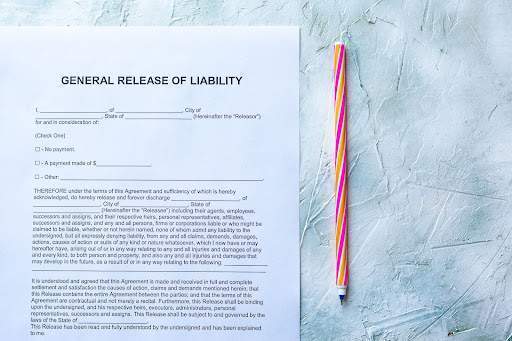The final step in a personal injury case is signing a “release of all claims” form for the other party. Including this form or liability waiver is generally part of the settlement discussions between your attorney and the defendant or their insurance carrier.
Although it may seem this form is only intended to benefit the defendant, your attorney with Ernst Law Group can help ensure that your rights are properly protected.

The purpose of a personal injury release form
The release of claims form seeks to guarantee that you won’t file another lawsuit against the defendant or seek additional damages from them related to the incident in question—you release them of their liability.
The release is often drafted by the defendant’s insurance company and is written to protect its interests – not yours. It’s critical to have your own California personal injury attorney review any release that the other party wants you to sign.
Your lawyer may revise the release so that the language is more neutral or add clauses that protect your interests, making it a mutually beneficial agreement.
Components of the personal injury release form
Each insurance carrier has its own general release form which may be modified to fit the specific details and needs of each case. In general, most release forms contain the following provisions:
- The settlement amount and the terms upon which you will receive it (i.e., a lump sum payable by a specific date, or a structured settlement requiring the purchase of an annuity).
- A statement that the claim has been resolved through this settlement and that neither the defendant nor their insurance company has any other obligation to pay you. This is a release of claims.
- The agreement is that by receiving this settlement, you’re waiving your right to file another lawsuit against the defendant or their insurer for the same accident.
- A statement that you, not the defendant or their insurer, are responsible for any third-party interests in your settlement — you indemnify and absolve them of those interests. For example, if you received medical treatment on a lien, you are responsible for paying that lien, not the at-fault driver.
- A stipulation that neither party admits fault by means of signing the release.
Things to look for in a waiver of liability
In order to protect your interests in other potential claims, you should pay special attention to these things that the insurer might try to slip into the release.
- Punitive damages. You should not waive your right to seek punitive damages against the defendant if you have good reason to expect those to be awarded and if the judge didn’t assess them at trial.
- Who is being released. Check which party is listed as being released from indemnity – either a person or an entity like a corporation. Each release should only list one party and should not release other parties involved in the case, especially if claims against another defendant are still pending. Each defendant needs to request their own release from indemnity because certain terms might apply to one defendant but not another.
- Not a recovery of all damages. The release should state that you have not recovered all possible damages from the incident. For example, you might be eligible to receive disability benefits, but absolute language in the release saying you’ve recovered “all damages” could make it more difficult to collect those benefits.
Do you need representation in a California personal injury case?
If you were hurt in an incident that wasn’t your fault, call the California personal injury attorneys with Ernst Law Group today. We can help you recover damages to get you back on your feet. Call us today at (805) 541-0300 for a free consultation.


